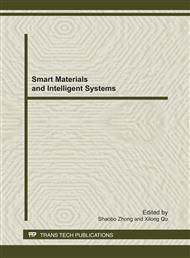p.12
p.16
p.21
p.26
p.31
p.35
p.40
p.45
p.50
Effect of Sintering Temperature on Electrical Properties of ZnO Varistor Ceramics
Abstract:
To obtain ZnO varistors with high voltage gradient, ZnO varistors were fabricated by traditional ceramic sintering technique, the effect of different sintering temperature (1135~1155 °C) on electrical properties of ZnO varistors were investigated. The experimental results show that with increasement of sintering temperature, the grain size of ZnO varistor ceramic becomes bigger, the voltage gradient of varistor decreases and the density is improved. When the sintering temperature is at 1135 °C, the voltage gradient of varistor is up to 329V/mm, the leakage current is 8μA and the density is 96.4%. When the sintering temperature is at 1140 °C, the voltage gradient of varistor is 301V/mm, the leakage current is 4μA and the density is 96.6%. Compared the results at 1135 °C with 1140 °C , it is found that the comprehensive electrical properties of ZnO varistors reach maximum at 1140 °C.
Info:
Periodical:
Pages:
31-34
Citation:
Online since:
January 2012
Authors:
Price:
Сopyright:
© 2012 Trans Tech Publications Ltd. All Rights Reserved
Share:
Citation:


